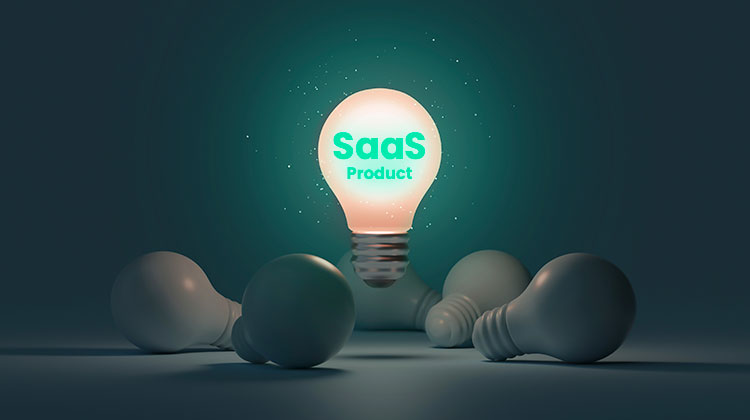Ideation: How to Come Up with a Winning SaaS Product Idea

Ideation is the springboard from which all promising SaaS (Software as a Service) products leap.
The ideation process provides a structured way to brainstorm, develop, and validate ideas.
It helps you answer questions like, “Does this product have the potential to resonate with users? Is there a demand for it in the market? Will it give us a competitive advantage in the SaaS marketplace?”
These are critical questions. That’s why it’s essential to master the art and science of ideation if you hope to launch a successful SaaS product.
Ideation Process for SaaS
The ideation process for SaaS can be broken down into several key components:
Problem Identification: The first step involves recognizing a need that current solutions in the market don’t adequately address. This often stems from understanding the target audience and market trends.
Idea Generation: Once the problem is defined, the team brainstorms to generate potential solutions. This phase encourages thinking outside the box and considering many possibilities.
Idea Evaluation: The team then assesses each idea’s feasibility, relevance, and potential impact. This may involve market research, SWOT analysis, or even preliminary prototyping.
Idea Refinement: Based on evaluations, the most promising ideas are refined and further developed. This could include defining the product’s unique value proposition, outlining its features, and designing a preliminary user interface.
Idea Validation: Finally, the refined ideas are validated with the target audience or stakeholders. This might involve conducting surveys, interviews, or beta testing.
Techniques for SaaS Product Ideation
Brainstorming
Brainstorming is a powerful tool in the ideation process. This free-wheeling technique encourages team members to think outside the box, challenge assumptions, and come up with as many ideas as possible, no matter how wild they may seem.
The first step is to clearly define the problem or need you are addressing. Then, generate a broad array of potential solutions, and refine these into more concrete and feasible ideas.
Techniques like mind-mapping, the SCAMPER method (Substitute, Combine, Adapt, Modify, Put to another use, Eliminate, and Reverse), and the Six Thinking Hats can enhance the effectiveness of brainstorming sessions.
Competitive Analysis
The competitive analysis involves identifying key competitors in the SaaS space, thoroughly understanding their product offerings, and learning from their successes and failures.
This technique lets you identify gaps in their products or services that your solution could fill. Analyze your competitors’ features, pricing models, marketing strategies, customer reviews, and more.
Tools like Porter’s Five Forces can be used for a more structured competitive analysis.
Market Research
Market research provides vital insights about your target audience, market trends, and industry standards.
This could involve conducting customer interviews to understand their pain points and expectations, sending out surveys to gather data on user behavior and preferences, or analyzing market data to identify trends and opportunities.
These insights are invaluable when generating and validating your product idea.
Technology Trend Analysis
Staying current on the latest technology trends can spark ideas for innovative SaaS products. Explore advancements in fields like artificial intelligence, machine learning, blockchain, and data analytics.
Also, look into evolving tech-related consumer behavior. For instance, the increasing use of mobile devices may indicate a need for mobile-friendly SaaS solutions.
SWOT Analysis
Conducting a SWOT analysis for your potential product idea can help you understand its feasibility and potential in the market.
This involves identifying its strengths (unique features or capabilities), weaknesses (limitations or areas for improvement), opportunities (unmet customer needs or market gaps it could fill), and threats (potential challenges, including competition, technological changes, or regulatory issues).
Evaluating and Selecting the Best SaaS Product Idea
Criteria for a Good SaaS Product Idea
After generating a list of potential SaaS product ideas, the next step is to evaluate each idea against a set of criteria. Here are some criteria to consider:
Uniqueness: Does the idea offer something that isn’t already available in the market? Does it solve a problem in a unique or superior way?
Scalability: Can the product scale as your business grows? SaaS products should accommodate increasing users or larger workloads over time.
Market Demand: Is there a clear need or demand for the product? Understanding the size of the potential market and the intensity of the demand is crucial.
Potential Profitability: Is the idea likely to be profitable? Consider factors such as possible pricing strategies, cost of development and maintenance, and estimated customer lifetime value.
Feasibility: Do you have the resources (time, skills, finances) to develop the product? If not, are you in a position to obtain these resources?
Process for Selecting the Best Idea
Once you’ve evaluated each idea, it’s time to select the most promising one. A common approach is to rank the ideas based on the evaluation criteria. You could also use a scoring system, where each idea is given a score for each criterion, and the one with the highest total score is chosen.
This process may also involve further vetting of the top ideas, which could include a deeper analysis of the market, consultation with industry experts, or conducting preliminary market testing.
Remember that this is a critical decision, as the selected idea will guide your product development and, potentially, your business.
Customer Validation
Customer validation is a crucial step in selecting a SaaS product idea. It involves gathering feedback from potential users to ensure the chosen idea resonates with them and meets their needs.
This can be done through various methods, such as beta testing, where a select group of potential users tests a functional version of the product, and focus groups, where the idea or early versions of the product are discussed in detail with a small group of people, or prototype reviews, where users interact with a simplified version of the product.
The feedback gathered through these methods provides valuable insights that can confirm the idea’s potential or highlight areas for improvement. This helps to reduce the risk of developing a product that doesn’t meet market expectations or demand. It can also provide early indicators of how the product may be received in the market, guiding further development and marketing efforts.
Embrace the Chaos
The ideation process is the starting point where raw ideas are generated, evaluated, and selected for further development.
A well-executed ideation process can lead to the creation of unique, innovative, and impactful SaaS products that fill a gap in the market, meet customer needs, and drive business success.
Each step you take in this process, the ideas you consider, and the feedback you incorporate get you closer to creating a SaaS product that can make a difference.
Embrace the creative chaos, and remember that each idea, no matter how outlandish it may seem, could be the seed for your next successful SaaS product.
Happy ideating!

